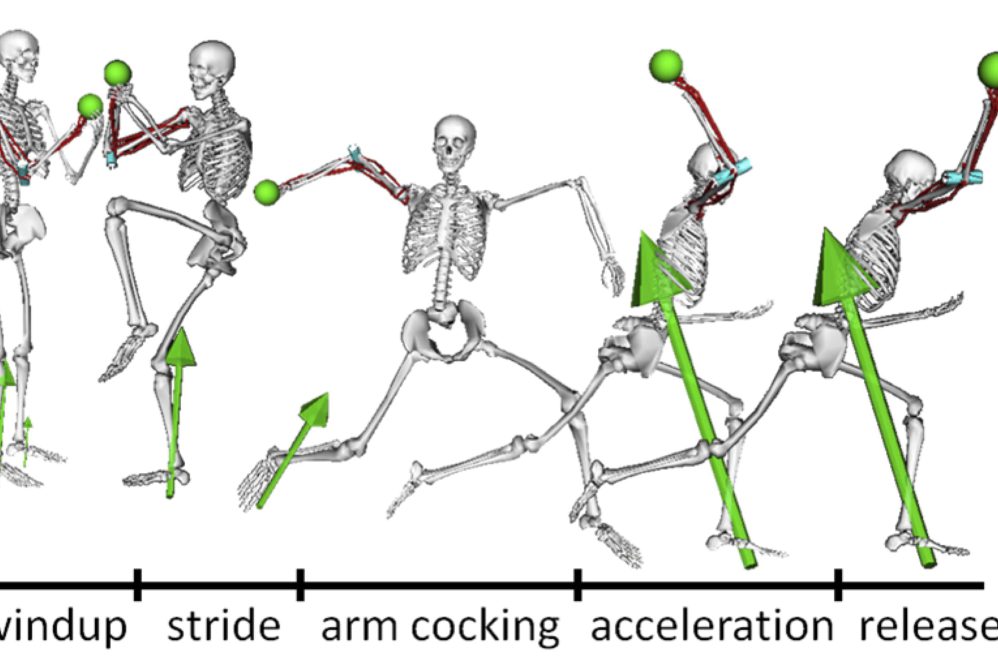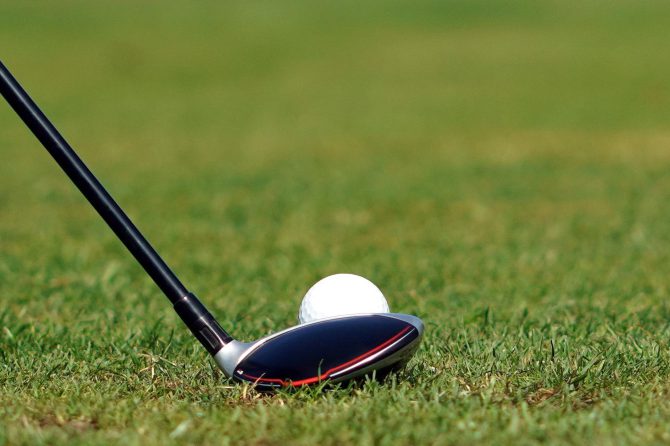Title: Unveiling the Essence of Golf Swing Biomechanics for Peak Performance and Safety
The biomechanics of the golf swing play a pivotal role in enhancing performance and averting injuries. This article explores the intricate mechanics of the golf swing, dissecting the interaction between the body’s musculoskeletal system and the forces exerted during the swing. By scrutinizing the kinetic and kinematic elements of the movement, we shed light on the mechanics that form the foundation of an effective and efficient golf swing. Through a comprehensive analysis of muscle activation patterns, joint movements, and force distribution, this article aims to equip golfers with the knowledge and strategies to elevate their performance while minimizing injury risks.
Biomechanical Evaluation of the Golf Swing: A Holistic View
Examining the golf swing biomechanically entails a thorough analysis of the body’s movements throughout the swing. This evaluation serves to pinpoint areas for enhancement in the swing and identify potential injury triggers.
A holistic biomechanical evaluation includes scrutinizing all facets of the swing, from the setup to the follow-through. The following key factors are assessed:
- Body Position: Proper body positioning at address is crucial for a consistent swing and injury prevention.
- Club Path: The trajectory of the club head during the swing impacts strike quality and distance.
- Clubface Angle: The angle at which the clubface contacts the ball influences accuracy.
- Swing Speed: The velocity of the club head at impact determines ball travel distance.
- Tempo: The rhythm of the swing affects its fluidity and consistency.
The outcomes of a biomechanical assessment can guide the development of personalized training programs aimed at refining the swing and reducing injury risks through exercises targeting flexibility, strength, and power enhancement.
Understanding the Significance of Muscle Groups in Swing Dynamics
The golf swing entails a dynamic interplay of various muscle groups, each with a distinct role in optimizing performance and preventing injuries.
- The backswing kickstarts with the lower body, where the hip flexors and adductors generate power, while the glutes and hamstrings provide stability.
- During the downswing, the quadriceps in the thighs accelerate the legs, aided by the hip extensors and glutes for power generation.
- The coordination of the various muscles ensures a powerful and precise strike.
Unveiling the Biomechanics of Energy Transfer for Optimal Power and Efficiency
The golf swing relies on the intricate transfer of energy to maximize power and efficiency. Proper understanding of this transfer is essential for identifying areas of improvement and enhancing overall performance.
The body’s muscles and joints collaborate to generate a potent rotational force during the downswing. This force cascades through the kinetic chain, commencing from the legs and hips, passing through the core and shoulders, culminating in the arms and club movement. Seamless sequencing and timing of these movements are imperative for efficient energy transmission. Any disruptions in this chain can result in power loss.
Tips for Optimizing Energy Transfer:
- Ensure a stable lower body by maintaining slight knee bends and grounded feet.
- Initiate the downswing with a forceful leg drive for upward force transmission.
- Engage the core and synchronize hip and shoulder rotations for a robust swing foundation.
- Allow the arms to follow the body’s rotational dynamics for effective energy transfer.
Identifying and Rectifying Common Swing Faults
Recognizing and addressing swing faults are paramount for performance enhancement and injury prevention. Here are some prevalent faults and their corrective strategies:
- Over-the-Top Swing: Focus on maintaining the clubhead within the swing arc by initiating the downswing with the left hip.
- Swaying or Sliding: Stabilize the lower body by engaging the core and legs for power generation.
- Early Extension: Preserve spine angle and gradually extend arms to maintain swing integrity.
Incorporating ergonomic considerations into swing mechanics is vital for mitigating injury risks and optimizing performance. Proper posture, grip, and swing techniques can alleviate muscle strain and enhance swing consistency.
In Closing
Understanding the biomechanical intricacies of the golf swing is paramount for honing technique, ensuring consistency, and promoting longevity in the sport. By leveraging the scientific insights delineated in this article, golfers can refine their swing mechanics, fostering a profound sense of power and precision on the course.
Original article source: Golf Lessons Channel - Biomechanical Analysis of the Golf Swing: Enhancing Performance and Preventing Injury

Golf, often referred to as a game of precision and finesse, goes beyond swinging a club; it delves deep into the biomechanics of the golf swing. This intricate and multi-segmented movement demands more than just physical prowess; it requires a profound understanding of how the body’s mechanics influence performance and injury prevention. Let’s unravel the secrets behind optimizing your golf swing through biomechanical analysis.
Unraveling the Complexity of the Golf Swing
The golf swing is a symphony of joint motion (kinematics) and force production (kinetics) that harmoniously come together to propel the ball toward its target. Understanding the biomechanics of the golf swing is like deciphering a sophisticated puzzle where every joint angle, muscle engagement, and force application plays a vital role in the overall performance.
Identifying and Correcting Swing Faults
In the realm of golf biomechanics, perfection is not just a dream but a goal. By conducting a meticulous biomechanical analysis, coaches and golfers can pinpoint deviations from the optimal swing pattern – commonly known as swing faults. These faults, if left unaddressed, can not only impede performance but also pave the way for potential injuries. Rectifying these faults through targeted training programs can be a game-changer in enhancing efficiency, increasing club head speed, and reducing unnecessary strain on the body.
Benefits of Embracing Biomechanical Principles
The integration of biomechanical principles into golf training programs offers a myriad of benefits that transcend the course itself. By fine-tuning your swing mechanics based on solid biomechanical analysis, you not only elevate your performance but also prolong your enjoyment of the sport. These principles provide a scientific foundation for enhancing your skills, ensuring consistency in your game, and safeguarding your body from the wear and tear that often plagues avid golfers.
Practical Tips for Optimizing Your Golf Swing
- Focus on Proper Body Alignment: Maintain a balanced and aligned stance to promote a more consistent swing.
- Enhance Club Path: Work on your club’s path to strike the ball squarely and maximize distance effortlessly.
- Master Swing Speed: Harness the power of swing speed to propel the ball with precision and accuracy.
- Fine-Tune Your Tempo: Cultivate a rhythmic swing tempo to ensure smooth and effective transitions.
Case Studies: Transforming Performance through Biomechanical Analysis
Sarah, an avid golfer, struggled with inconsistent swing patterns and recurring shoulder pain. Through a comprehensive biomechanical analysis, her coach identified key discrepancies in her swing mechanics. By tailoring a training program focused on correcting these faults and optimizing her swing through biomechanical principles, Sarah not only improved her performance but also bid farewell to her persistent shoulder discomfort.
Elevate Your Golf Game with Biomechanical Expertise
delving into the realm of golf biomechanics is like peering into a treasure trove of insights and opportunities for growth. By embracing the power of biomechanical analysis, you can unlock your true potential on the course, elevate your performance to new heights, and safeguard yourself against the pitfalls of injuries. So, step onto the greens with confidence, armed with the knowledge that your golf swing is not just a motion; it’s a carefully crafted masterpiece of precision and power.
Embrace the biomechanical journey, and watch your golf game soar to unparalleled levels of success and fulfillment.




